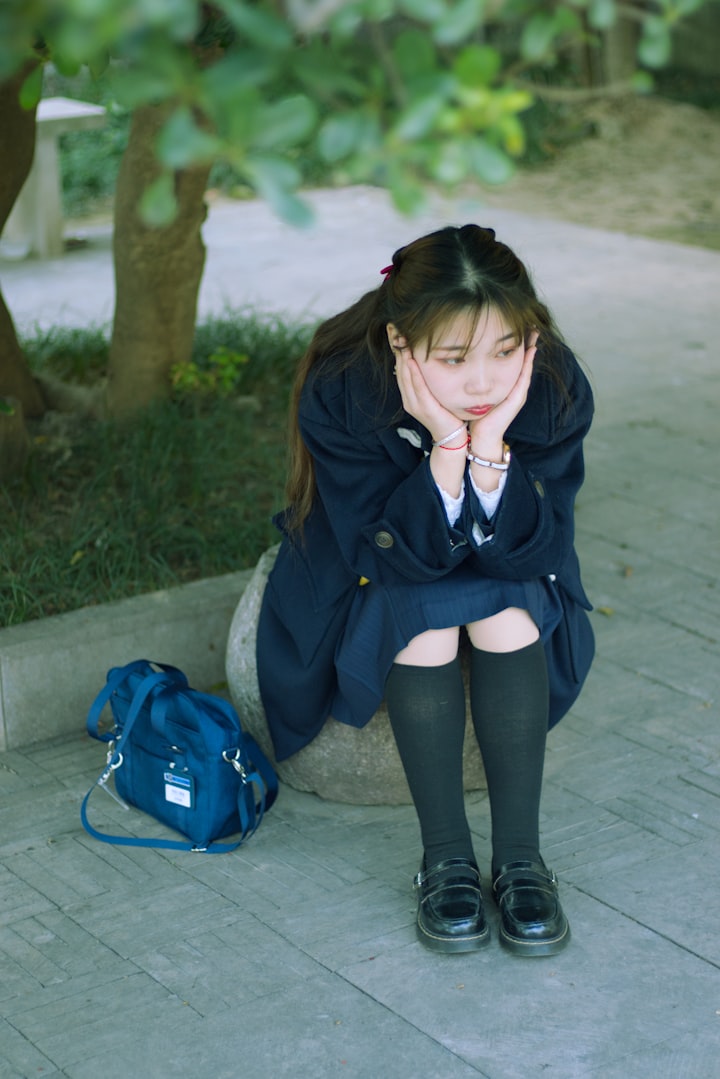The School Uniform Debate: Is the Added Cost Costing Our Children Even More?
It’s time to retire school uniforms in public schools
Schools have just rang the bell for the beginning of the 2021–2022 school year. As we learned last year when the pandemic began, there is no way to fully prepare yourself and your children for what may lie ahead down Reading Road, Success Street, and Learning Lane. While schools and parents often work together to ensure that our children’s needs are being met, there are simply some things that we can’t control.
One thing that can be controlled, and has brought controversy in my community lately is the subject of mandated school uniforms. This began after the high school’s orientation, whose purpose was to inform parents on what items to purchase for their children and what to expect for the upcoming year.
The very next day, the school board issued a statement stating that black pants, a previously approved uniform choice, were no longer going to be allowed as part of their uniform policy.
Keep in mind that the orientation that parents attended took place only THREE days before the first day of school and made no mention of changes to the uniform policy. This gave parents who had purchased black pants for their children to wear to school TWO days to adjust to the new policy. Never mind the money that they had previously spent on pants that may now never be worn.
As a result, local parents have teamed up to express their concerns to the school board about how needless the school uniform policy has become.
Our Uniform Policy
Our school’s spirit colors are orange and blue (I know, it’s a hideous combination). The school does not provide the uniforms to the students nor supply them to be purchased. Parents are responsible for locating, picking out, and purchasing the appropriate clothing.
Kids K-12 are required to wear specific color polo shirts and shorts or pants. School t-shirts can also be worn. Polos can have an emblem (such as a Nike) but must be small enough that it can be covered with a quarter. Dresses and skirts of the same color specifications can be worn by girls. Shoes must be closed-toed or “Chaco-style” sandals. You get the picture.
We are a public school and the only school in the entire region that requires uniforms. I’ll admit that I was extremely jealous of all my friends’ kid’s cute little outfits when they posted their “First day of ____ grade!” pictures on social media. I simply asked my son, “So, you want to wear blue, white, or orange?”
Having attended a public school myself and only having to worry about a reasonable dress code, I feel like our children are missing out. The way someone dresses says a lot about a person. It gives little clues about what they like, what they don’t like, their personality, and their character.
My son had a conversation in the line at the grocery store with a little boy simply because he was wearing an “Among Us” t-shirt. I had to pull him away or else they would still be talking about tasks, imposters, crewmates, and whatever else goes on in that game.
Over the past week, I have been exposed to both sides of the debate and heard compelling arguments from both. While I respect the logic that most presented in favor of the uniform policy, I would be very pleased to see it go. These are some of the points that were made in favor of the uniform policy by parents, teachers, and school personnel.
Discipline
It is said that schools balancing the economic and social statuses of the children will reduce bullying and its effects. This is because teasing and bullying are often spurred on by some students not being able to afford the most fashionable or name-brand clothing. Uniforms were designed to level the playing field so that no one would be singled out because of their clothing.
It is thought to prevent gangs from developing on campuses, as they will not be able to display their “colors”. Decreases in discipline problems and dangerous behaviors such as fighting have also been presented.
Reality
This is the logic that I understand the most. Growing up, I always wore hand-me-downs from friends and family. If I happened to get something new, it was from stores like Wal-Mart and K-Mart. I was teased about my clothes, and can completely empathize with kids of today who are going through the same hardships.
My counter is that even if the clothes are within “uniform guidelines’, they still have to be purchase the same as other clothing. The uniforms will still be hand-me-downs or come from Walmart, while those higher on the socio-economic ladder will have name brands. It may make it a little bit less obvious but not enough to warrant a uniform policy.
Prevents Disruption
School staff made the point: “It prevents us from having to enforce a dress code and worry if shorts are too short or tank top straps are too narrow. With more freedom regarding clothing choices comes more responsibility, which typically falls on the teachers rather than the students and parents. It would become their job to inspect each and every student that comes in the door to make sure they are following the dress code.
Reality
If the issue with the student’s clothing isn’t visually obvious when they arrive in the morning, then it’s not a big enough issue to warrant sending them home or having them change.
Also, even though an article of clothing meets the uniform policy, it can still be a violation of the dress code. Khaki shorts can be too short, while the navy blue polo shirt can be too tight.
When I was in high school, they instituted the “fingertip rule”. If you placed your arms by your side and the tip of any finger touched skin, then the shorts were too short. This was the fairest because it was based on body proportion rather than a specified number of inches the shorts had to be. There were very few times once everyone understood the new policies that anyone was pulled from class due to their clothing.
Sexual Harassment
It’s no secret that a lot of dress codes and uniform policies were created to prevent girls from dressing “proactively” as to not “invite” unwanted attention from their male peers.
Reality
I wish I could respond with “These are elementary school kids, how provocative can they be?” However, one trip to any public place, especially during the summer has enlightened me to the minuscule pieces of fabric that some parents allow their children to walk out of the house wearing. For this reason, I absolutely agree with dress codes, because students do not need to be distracted due to their classmates’ clothing (or lack of it).
Uniforms however seem to be an attempt to hide so much, because of the monstrous consequences if a female were to show an inch of skin. This could cause complete anarchy because we still live in a society that we blame the females for their actions rather than hold the males responsible for theirs.
I’m guessing that schools believe that they can cut any possibilities of sexual harassment off at the pass by having everyone look the same (and by the same I mean a frumpy sack of potatoes). However, studies show that school uniforms do not prevent or even decrease the number of sexual harassment incidents.
Money
It helps the parents save money by being able to mix and match pieces so that they don’t have to spend a fortune on school clothes.
Reality
This is probably the most far-fetched because, in reality, parents are having to purchase two separate wardrobes for their children. It is very unlikely that kids wear their uniforms during weekends, holidays, and school breaks. Not to mention, as fast as children grow, especially in the earlier years, there’s the possibility of having to buy increased sizes of the same uniform several times throughout the same school year.
Also, the fact that they wear the same clothes day after day means that they are bound to fade, become damaged, or worn. You can pretty much guarantee that they will have to be replaced at least once throughout the year.
My feeling is that if the school system believes so strongly in the benefits of uniforms, then they should provide them, or at least provide a clothing allowance to all students. I definitely wasn’t happy about buying an entirely new uniform wardrobe for my son last February (as he had outgrown the previous set), only to be sent home for virtual learning come March.
Convenience
The streamlined choices make it easier to pick out clothes in the mornings, so parents/children are more likely to arrive to school on time in the mornings.
Reality
I will agree with this to an extent. Picking out my son’s clothes for the week has never been easier because it’s downright boring. However, the 30 extra seconds that it would take for me to pick out a different outfit is not going to be the main factor in whether or not we are on time in the morning.
What’s not so convenient is when you are unable to find specifically what the school is requiring, or your child needs special sizes or special clothing due to disability or medical needs. Uniforms do not offer convenience for these people.
Safety
The point has been made that uniforms help teachers identity their students on school grounds so that any intruder will be immediately noticeable. Away from campus, such as on field trips, it also helps them to identify their children in the event one gets separated from the group.
Reality
In smaller and more rural schools, the faculty and staff are typically very good at recognizing their students and notice quickly if anyone seems out of place. Larger schools often have other security protocols in place and maybe even security officers on campus. Schools are already doing what they can to protect our children when we aren’t there.
A lot of schools, my son’s included have gotten on the “field trip shirt” train. They are the same color and the event name and school name are printed on the shirt to be able to easily identify the group in public settings. Yes, they have to be purchased, but I’d much rather pay $10 for a t-shirt than hundreds of dollars on uniforms.
Equality
School uniforms are said to create an environment of equality and enhance school spirit. It prevents students that are wearing “nicer” clothes from being noticed more and have extra attention paid to them, while other students are neglected or get left behind. It removes the competitiveness of appearances out of the classroom.
Reality
Uniforms take away freedom of expression, which is important to student development. It helps them to explore and develop their personalities. Students who can pick out their own clothing are able to establish independence and build their confidence. We preach to our children, “You’re special”, “Just be yourself”, and “It’s ok to be different”, only to send them to a classroom where they are dressed just like everyone else. Uniforms promote conformity and following the crowd.
School is More Than Just an Institution
According to the National Center for Education Statistics, uniforms are required at about 22% of U.S. public schools and the number of schools implementing them is rising. However, University of Missouri assistant professor, David Brunsma concluded that there is no positive correlation between uniforms and school safety or academic achievement. Brunsma reviewed past studies on the effect of uniforms on academic performance. He analyzed two enormous databases, the 1988 National Educational Longitudinal Study and the 1998 Early Childhood Longitudinal Study.
In short, we consistently acknowledge the issues of bullying and violence in our schools, however, school uniforms simply aren’t doing anything to combat either. If nothing else, we are doing our children a disservice by trying to have them conform to the masses and encouraging them to just be a small piece of a larger institution.
We want them to realize that they are more than just a student who goes to school to learn their ABCs and 123s. They are practicing independence, gaining confidence, learning how to communicate with peers and adults, and what their place is in the world. Their place is not to be just like everyone else.
About the Creator
Kassondra O'Hara
Working mom who uses her curiosity to fuel the curiosities of others ~ Writes mostly history and true crime







Comments
There are no comments for this story
Be the first to respond and start the conversation.